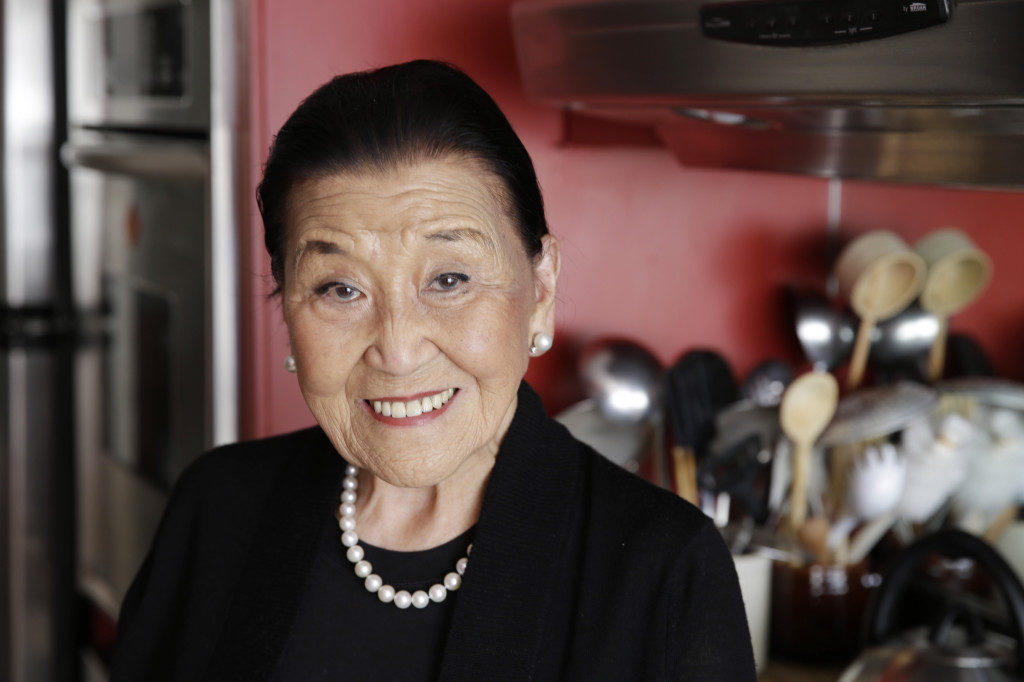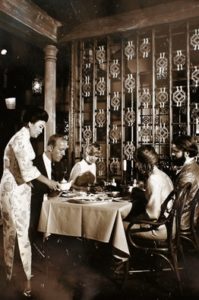
It’s impossible to talk about US foodways or the formation of an American palate without talking about Chinese food. From it’s iconic representation in film and tv programs to the sheer number of Chinese restaurants across the United States, Chinese food is undeniably a ubiquitous part of the American foodscape and imaginary. Americanized Chinese dishes, such as Chop Suey and Egg Foo Yung, first became popular in the late 1850s with Gold Rush miners in San Francisco and ultimately spread to urban centers in the early 20th century, where diners consumed the perceived “exotic” fare with great gusto.
However, far from signaling a greater inclusion of Chinese immigrants and Chinese-Americans into the civic fabric, the increasing interest in Chinese food occurred amidst the prevailing Nativist sentiments that saw the passing of the 1882 Chinese Exclusion Act and the Johnson-Reed Act in 1924. In this xenophobic climate, Chinese food–which was primarily Cantonese fare modified for a white clientele–was seen as cosmopolitan and rare and yet also, disgusting, cheap, and unsavory. As with the equally popular slumming tours of Chinatown of the early 1900s, the demand for Chinese restaurants was often just a means for consumers to flirt with the potentially dangerous and unassimilable “other.”
It wasn’t until the end of World War II that perceptions of Chinese in America and Chinese cookery began to change. Seizing the moment, a few Chinese restaurateurs on the East and West coasts opened restaurants that defied existing connotations of Chinese food and redefined its possibilities. One such trailblazer was Cecilia Sun Yan Chiang. In 2005, UC Berkeley Oral History Center interviewer Vic Geraci had the opportunity to sit and talk with Cecilia about her extraordinary role in bringing regional Mandarin and Szechwan cuisine to San Francisco.
Born in Wuxi, near Shanghai, in 1920, Cecilia Sun Yan Chiang was the seventh daughter–“Sun Yun”–of a wealthy and educated family. Cecilia’s bucolic early life was shattered by the 1942 Japanese invasion of China, which forced her to leave home in an arduous journey to Chongqing. In 1949, Cecilia would again have to leave home to escape the Communist Revolution. Leaving on “the last plane from Shanghai,” Cecilia would never again live in China.
Cecilia settled in Tokyo, Japan with her husband and family, where she opened a Chinese restaurant for the Chinese and American expatriate community there. This moment of stability would prove a relatively short-lived venture. In 1957 Cecilia went to visit her widowed sister in San Francisco. Intending to stay only for a few months, Cecilia became entangled in the purchase of a restaurant with friends. Although her friends ultimately backed out, Cecilia decided to keep the property and open her first Chinese restaurant in the United States: The Mandarin.
Located on the outskirts of Chinatown, the first incarnation of The Mandarin was an experiment in confidence and ingenuity. Although she never learned to cook as child, Cecilia did develop an appreciation for fine cooking. From the beginning, Cecilia knew she wanted to serve customers the Mandarin and Szechuan food of her childhood and extensive travels across China. As she recalled in her oral history, she wanted “no chop suey in my menu and no egg fu yung. All this Chinatown stuff is a no-no.”
As a woman committed to serving a wholly different type of Chinese food than what her competitors were serving, opening a restaurant was no easy task. In the very early days of the restaurant, many of the Chinatown purveyors would not deliver to her because she did not speak Cantonese and was a woman. The restaurant was nearly empty for the first six months after it opened.
Cecilia didn’t let these early hardships stop her. She hired a chef and used every opportunity she had to educate diners by sending them samples of Beggar’s Chicken, Smoked Tea Duck, and Shark Fin. It worked. The Mandarin soon developed a loyal following including Jefferson Airplane band members, Vic Bergeron of Trader Vic’s, actor Danny Kaye, and famed journalist Herb Caen. Shortly after Caen wrote about The Mandarin, the demand began to exceed the size of the small dining room. When she began to have to turn away customers because the restaurant was at capacity, Cecilia knew she had to move to a bigger space.

In 1968 Cecilia opened a new, larger incarnation of The Mandarin in Ghirardelli Square. Obtaining space within Ghirardelli Square was, again, no easy feat. In her oral history interview, Cecilia recalls how the realtor tried to dissuade her from applying because Chinese restaurants were “too greasy, too dirty, a lot of mice, a lot of cockroaches.” In spite of the racially-motivated rejection of her offer, Cecilia did not back down.
Instead, she invited the building managers to dine at The Mandarin. Greeting them in a beautiful Chinese gown, she introduced them to her interpretation of Chinese food and, as always, served them on tables covered with clean, pink linen tablecloths. In this way, Cecilia showed them Chinese cuisine was more than just Americanized Cantonese food and that Chinese restaurants could provide as elegant an experience as any French or Italian restaurant. That night the building managers left the restaurant blissfully well fed and Cecilia got the building space she wanted.
Cecilia Chiang made the The Mandarin in Ghiradelli Square into an institution of the Bay Area dining scene and presided over it for 23 years, until she sold it in 1991. During those years, she also started a cooking school, wrote The Mandarin Way and The Seventh Daughter, and even launched a second restaurant, The Mandarette, with her son, Phillip Chiang, who went on to co-found the P.F. Chang’s restaurant chain. Cecilia Chiang was nothing short of a culinary ambassador and restaurateur. She pushed the boundaries of what Chinese food could be and, in so doing, promoted a sense of cultural pride that refused the racist caricature of Chinese cookery and by extension, Chinese and Chinese Americans.
Cristina Kim, Historian/Interviewer, September 2016